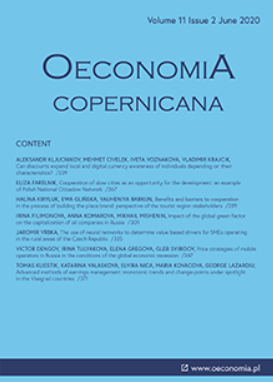Systematic review of variables applied in bankruptcy prediction models of Visegrad group countries
Systematic review of variables applied in bankruptcy prediction models of Visegrad group countries
Author(s): Mária Kováčová, Tomas KLIESTIK, Katarina Valaskova, Pavol Durana, Zuzana JuhászováSubject(s): National Economy, Business Economy / Management, Methodology and research technology
Published by: Instytut Badań Gospodarczych
Keywords: bankruptcy; bankruptcy prediction; variables; countries of Visegrad four;
Summary/Abstract: Research background: Since the first bankruptcy prediction models were developed in the 60’s of the 20th century, numerous different models have been constructed all over the world. These individual models of bankruptcy prediction have been developed in different time and space using different methods and variables. Therefore, there is a need to analyse them in the context of various countries, while the question about their suitability arises. Purpose of the article: The analysis of more than 100 bankruptcy prediction models developed in V4 countries confirms that enterprises in each country prefer different explanatory variables. Thus, we aim to review systematically the bankruptcy prediction models developed in the countries of Visegrad four and analyse them, with the emphasis on explanatory variables used in these models, and evaluate them using appropriate statistical methods Methods: Cluster analysis and correspondence analysis were used to explore the mutual relationships among the selected categories, e.g. clusters of explanatory variables and countries of the Visegrad group. The use of the cluster analysis focuses on the identification of homogenous subgroups of the explanatory variables to sort the variables into clusters, so that the variables within a common cluster are as much similar as possible. The correspondence analysis is used to examine if there is any statistically significant dependence between the monitored factors — bankruptcy prediction models of Visegrad countries and explanatory variables. Findings & Value added: Based on the statistical analysis applied, we confirmed that each country prefers different explanatory variables for developing the bankruptcy prediction model. The choice of an appropriate and specific variable in a specific country may be very helpful for enterprises, researchers and investors in the process of construction and development of bankruptcy prediction models in conditions of an individual country.
Journal: Oeconomia Copernicana
- Issue Year: 10/2019
- Issue No: 4
- Page Range: 743-772
- Page Count: 30
- Language: English

